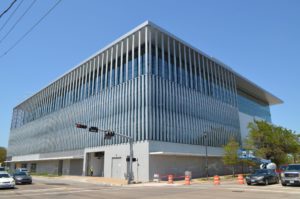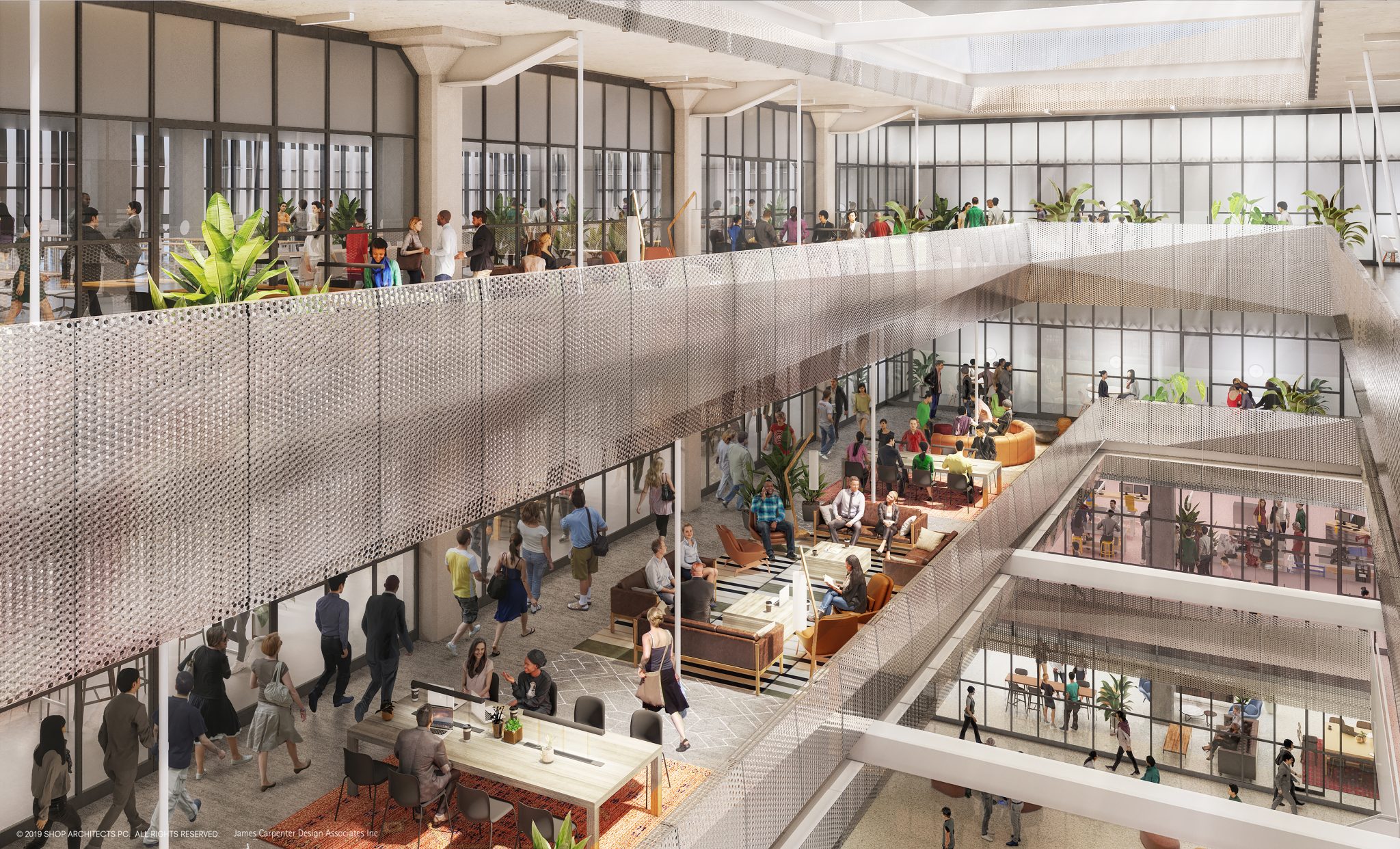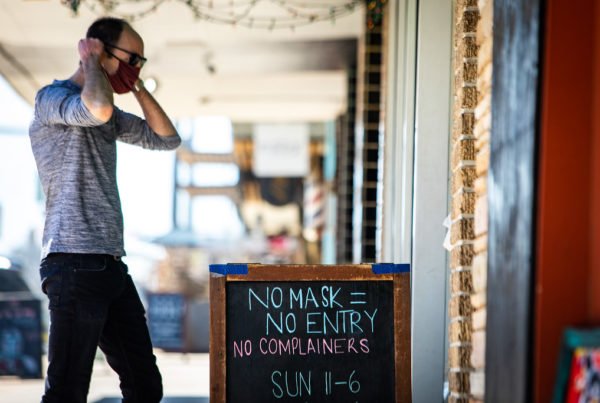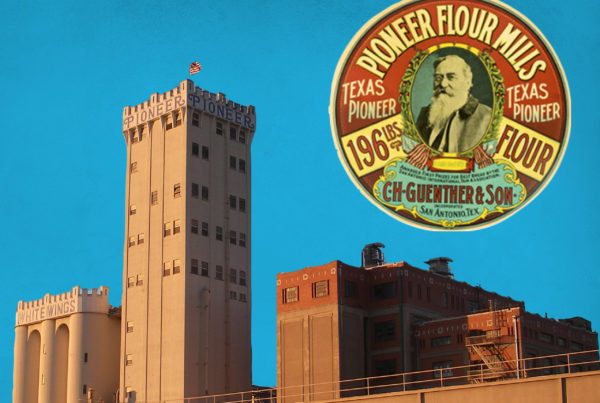If you’ve driven by Midtown on Interstate-69, you’ve probably seen the big new, shiny glass building on Main Street.
The Ion, now scheduled to open this fall, is the heart of Houston’s new innovation district, housed in the former Sears building that stood on the southern tip of what today is considered Midtown for nearly 80 years until it closed in 2018. Rather than razing the four-story building, the developer, Rice Management Company, is adding a fifth floor and remodeling it.

View of the Ion from Wheeler Avenue at Fannin. Florian Martin/Houston Public Media
While the Ion and the innovation district promise new hopes for Houston and its innovation economy, there are also still major questions and unresolved issues related to its location.
On a recent tour of the construction site, Ion Interim Executive Director Jan Odegard pointed to how the remodeled building looks very different from the old Sears. The whole building was previously covered with aluminum cladding. Now, the original art deco wall is visible, with its colorful tiles.
“For most Houstonians that came up to this now, the only thing they will recognize is the pink granite you see on the bottom, because everything else was covered up,” he said, standing on the building’s northside.
But the biggest change is the number of windows: The Sears building had very few narrow areas for the light to shine through.
“You didn’t want exterior light inside,” he said. “You wanted to control lighting because you wanted a person to walk in, forget the passage of time, because you wanted them to shop.”
That will be different now. A skyroof ensures light gets from the top all the way down to the basement, where there are classrooms for free workshops and training.
The first floor will have restaurants, bars and a coffeeshop, while the upper floors will be for entrepreneurs.
“Think about startups,” Odegard said. “One person with an idea down here. As soon as they need an office, they go to the second floor, they have an office. Their company gets some series A or B funding, they need a bigger office space, they can move to the third floor. When they really make it big, they want to have a space on the fourth or fifth floor.”
Outside is a plaza with seats and tables, with electric outlets under trees.
Across the street, in what used to be a Fiesta Mart, the climate-tech incubator Greentown Labs opened last month. And more developments are planned on the 16-acre site that includes the Ion.
City leaders are celebrating the developing innovation district as a major step to improve Houston’s standing as a startup city — but there are some skeptics.
One of them is Ed Egan, the former director of Rice University’s McNair Center for Entrepreneurship. While he agrees the city needs a connected, walkable district where startups can thrive, he has long argued that the location — in an underdeveloped part of town — will be detrimental to the city’s effort to improve its startup ecosystem.
“We wanted it somewhere where startups were already thriving, where there was everything that a startup would need, where there were no secondary objectives, where it wasn’t about urban renewal or something else,” he said. “Instead, it was about building the maximum possible value in the startup community.”
He alleged Rice Management Company, with support of the Greater Houston Partnership, chose the area for selfish reasons.
“We have non-market participants (in it) for their own ends, not to create economic growth,” Egan said. “They have no real expectation of doing that but instead to develop their own properties, to get headlines, to get donors, and so forth.”
In a statement to Houston Public Media, Rice Management Co. said: “Obviously, we disagree. The Ion already has attracted a number of major corporate partners – Including Microsoft, Intel, and the largest climate tech incubator in North America, Greentown Labs – and we expect others to join in the near future.”
A study by Egan estimated that because of the innovation district’s location, Houston could lose out on as much as $64 million in venture capital and $500 million in economic activity.
Serafina Lalany, vice president of operations at Houston Exponential, a nonprofit created to improve the city’s innovation culture, sees the Ion as just one of several innovation hubs throughout the sprawling city, including development of the Cannon in west Houston.
“What’s happening on the west side of town with the Cannon, the Founders District, is another one of these examples,” she said. “And very soon there will be announced another project of this nature called Bridge City.”
But there’s another group that has an issue with the Ion — a coalition of community groups has been raising concerns about gentrification of the historically Black Third Ward just adjacent to the innovation district.
The Houston Coalition for Equitable Development Without Displacement has been trying to get Rice Management Co. agree to enter into a community benefits agreement with them, in which the developer commits to supporting affordable housing, and creating jobs and tech opportunities for residents.
Rodgers said they will have a meeting about it this week.
“You know, I hear people tell me, ‘this is going to benefit the whole city,'” said Dolores Rodgers, a long-time Third Ward resident and part of the coalition. “Yes, it is. But there’s a cost to that. And the community that’s going to pay the major cost to it is going to be the residents of Third Ward.”















